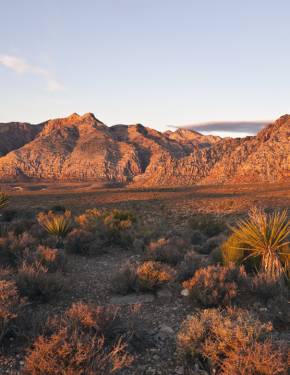Tarantula Migration in Arizona 2026
Every fall, thousands of tarantulas roam the desert looking for a mate
Best time: June–October
Most Arizona residents have encountered the desert tarantula or Aphonpelma chalcodes, one of the most common spider species in the state. Each summer, a remarkable natural phenomenon takes place across the arid landscapes of Arizona— the tarantula migration. Though not a traditional migration like that of birds, this event involves thousands of male tarantulas emerging from their burrows in search of a mate.
When to Observe Tarantula Migration
The tarantula "migration" typically starts with a monsoon season in June and lasts through October, coinciding with Arizona’s cooler fall temperatures. According to local experts, this period is when male tarantulas, often aged between 8 to 10 years, leave their burrows in search of females to mate with. As the National Park Service (NPS) notes, the timing can vary slightly depending on weather conditions, particularly temperature and humidity levels. However, the peak activity is usually observed in late September through October.
For those keen to track the migration, local forecasts from wildlife services or park authorities can provide updated information on the best times to observe this event.
Best Locations for Tarantula Viewing
Arizona's Sonoran Desert, covering much of the state’s southern region, is the prime area for tarantula sightings. Key locations include:
Casa Grande Ruins National Monument
Located southeast of Phoenix, this site is known for its arid landscape, ideal for tarantulas. It is open daily from 9 am to 5 pm, with an entrance fee of $10 for adults.
Organ Pipe Cactus National Monument
Situated on the U.S.-Mexico border, this International Biosphere Reserve offers excellent opportunities to spot tarantulas, especially at dusk. The park charges $25 per vehicle for a 7-day pass.
Tucson Mountain Park
Known for its sweeping desert views, this park is another popular spot for tarantula sightings, particularly during the late afternoon and early evening. Entry to the park is free, making it an accessible destination for wildlife enthusiasts.
If you're traveling to these locations, ensure you are prepared for desert conditions—bring plenty of water, wear sturdy shoes, and be mindful of wildlife.
Getting There and Infrastructure
Most of these viewing locations are accessible by car, and the drive from major cities such as Phoenix or Tucson usually takes between 1-3 hours, depending on the site. For those planning an extended stay, nearby campgrounds are available in locations like Organ Pipe Cactus National Monument, where camping fees start at $16 per night. There are also RV facilities, restrooms, and visitor centers for added convenience.
Organized Tours and Educational Programs
Several national parks and wildlife organizations in Arizona offer guided tours or educational talks during tarantula season. These tours, often led by experts, provide insights into the behavior of these fascinating creatures, as well as tips on how to observe them without disturbing their natural environment. Tour prices typically range from $20 to $40 per person, and many of these programs can be booked through the park’s official websites. Some tours even include night hikes, where participants can observe tarantulas at their most active times—just after sunset.
Responsible Viewing
Tarantulas, despite their intimidating size, are generally docile creatures. While they are not venomous to humans, their bites can cause mild irritation, similar to a bee sting. Observers are encouraged to watch from a safe distance—around 5-10 feet—without attempting to touch or handle the spiders. According to wildlife experts, tarantulas can become stressed by excessive movement or loud noises. Bright colors or sudden movements may trigger a defensive reaction, so it’s best to stay calm and quiet during your visit.
Additionally, these spiders should never be fed or otherwise interfered with. Tarantulas play a crucial role in the ecosystem, controlling insect populations, and even small vertebrates.
Species of Tarantulas in Arizona
Arizona is home to several species of tarantulas, with the most commonly encountered being the Arizona blonde tarantula (Aphonopelma chalcodes). In addition to this iconic species, others, such as the Tucson bronze tarantula (Aphonopelma vorhiesi) and the Grand Canyon black tarantula (Aphonopelma marxi) can also be found in various parts of the state. These species thrive in Arizona’s desert and scrubland environments, often hiding in burrows during the day and emerging in the cooler hours of dusk to hunt for insects. Each species has unique color variations, ranging from blonde to deep brown and black, making Arizona a diverse habitat for tarantula enthusiasts.
Arizona Blonde Tarantula
These large spiders can grow up to 5 inches in leg span, with females being larger and living longer than males. While males typically live for 8-10 years, females can live over 20 years, making them some of the longest-living spiders in the world. Tarantulas do not spin webs like most spiders but are instead burrow dwellers, spending much of their life underground.
Their hairy bodies help them sense vibrations in the air, alerting them to potential prey or predators. Interestingly, after mating, female tarantulas often consume the male to gain extra nutrients, a behavior that ensures the survival of her future offspring.
Other Attractions in the Area
For visitors traveling to witness the tarantula migration, there are other attractions to explore nearby. The Sonoran Desert is home to a diverse range of wildlife, including roadrunners, coyotes, and rattlesnakes. Nearby sites such as the Arizona-Sonora Desert Museum and Saguaro National Park offer further opportunities to learn about the desert ecosystem.





















































































